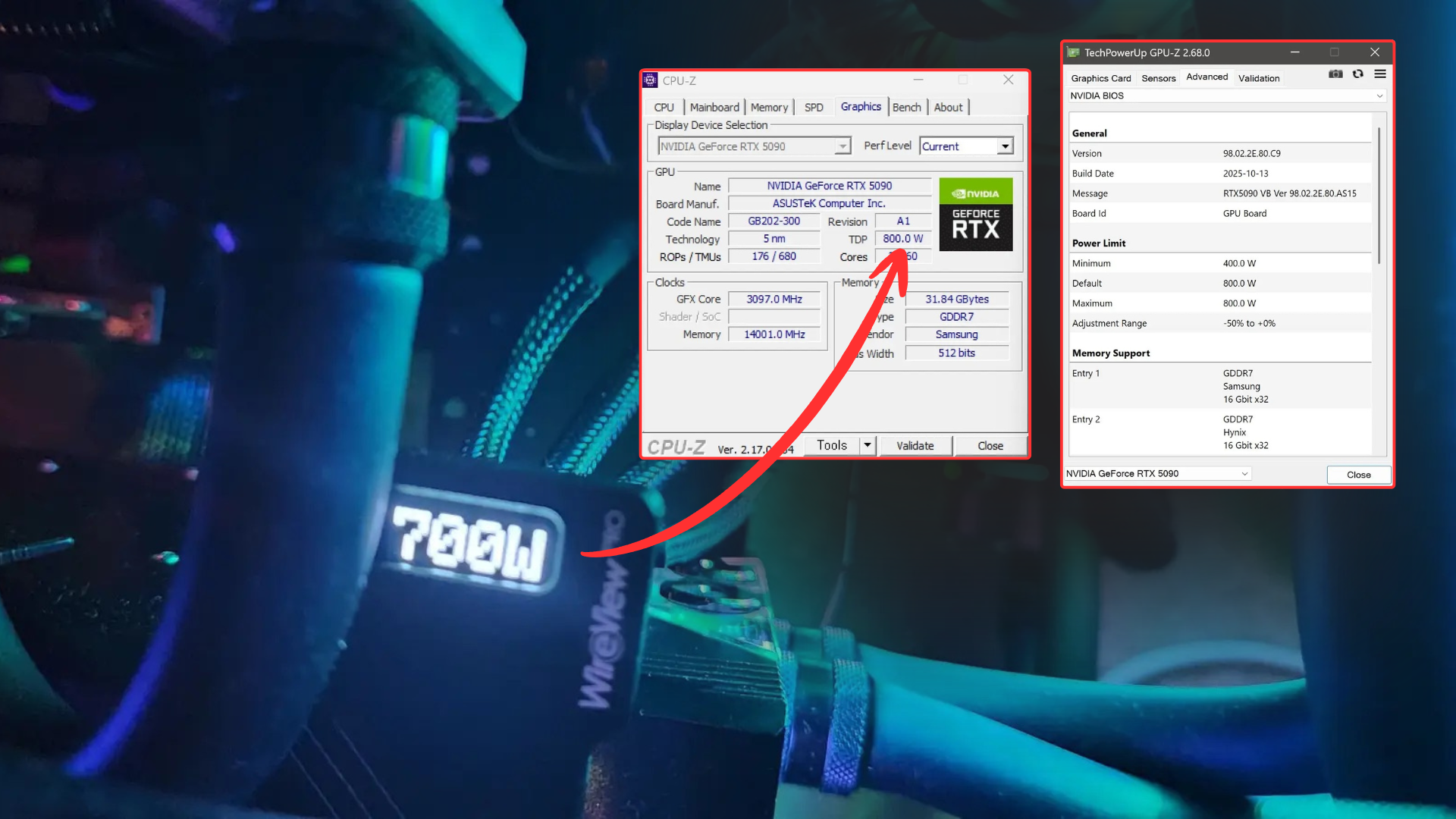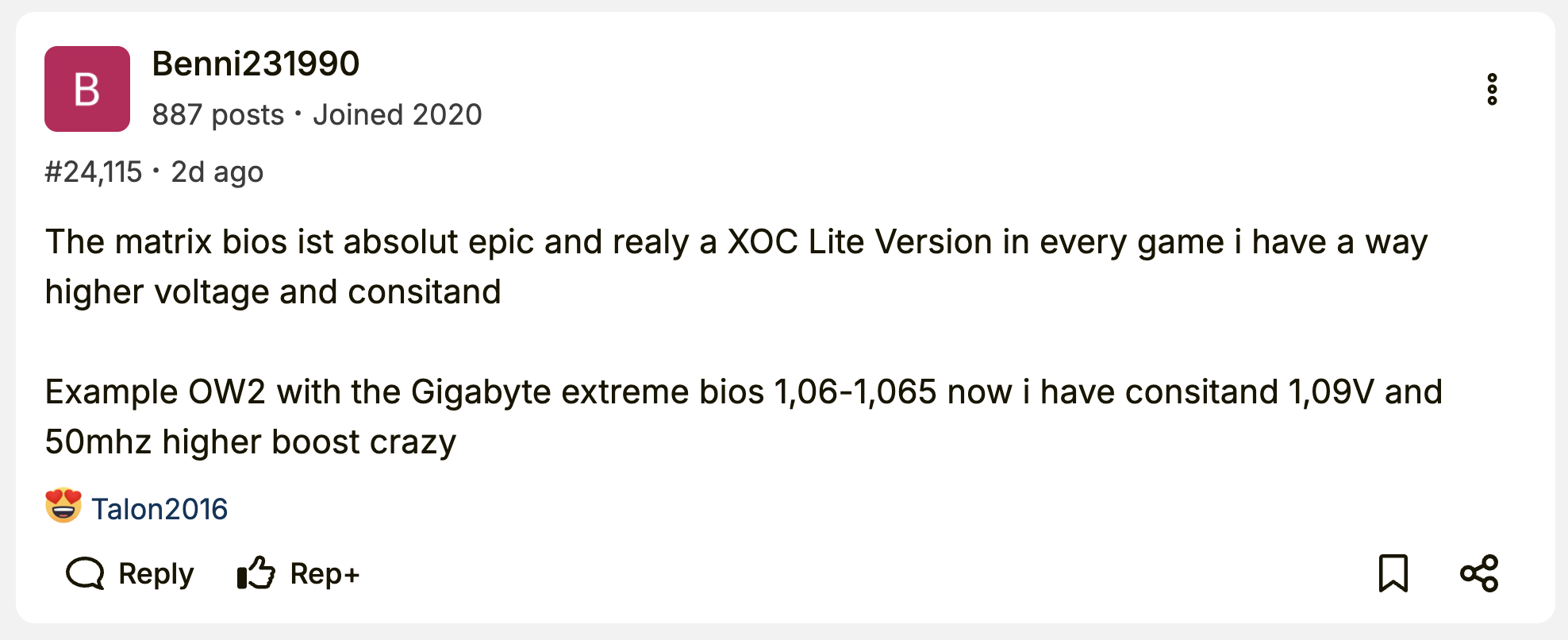Asus tempts fate, unleashes 800W "XOC" vBIOS for its $4,000 ROG Matrix RTX 5090 — Overclockers and high-end GPU junkies now have their hands on the hottest, most power-hungry 5090 around
Because 600W through the 12V-2x6 connector was too safe.

Nvidia's RTX 5090 GPUs, while unparalleled in performance, are also at the top of the leaderboard when it comes to burning down involuntarily. Asus — arguably the most prominent AIB partner for Nvidia — has dared to step into the ring and present something even more adventurous: The ROG Matrix RTX 5090, powered by a custom PCB capable of consuming up to 800W through its special firmware. Now that 800W VBIOS has escaped into the wild, users with otherwise standard, 600W RTX 5090s are experimenting with the unlocked overhead.
Peeking at the Overclock.net forums (page 1202 onwards) will show you various folk flashing the 800W XOC BIOS on their cards as soon as Benni231990 first posted the link for it a couple of days ago. It's relatively straightforward to install with NV Flash, but not every model is compatible right away. Variants like Gigabyte's Aorus Xtreme Waterforce can easily accept this firmware, likely because they match the ROG Matrix's three-channel fan header setup.
Variants with no fan headers, like liquid-cooled models, are also in the green, but some other models, like Asus TUF, have only two fan headers and simply don't work at the moment. This includes Asus' other high-end RTX 5090, the Astral, which many users complained about on the forums. Some models from PNY, Palit, and Zotac were also ruled out as compatible, as more and more people began testing it.

Regardless, the performance boost is visible: these BIOS-modded 5090s are running at 100-200 MHz higher boost clocks than Nvidia's stock numbers and Asus' own claim of up to +323 MHz on the actual ROG Matrix card. This is extreme overclocking territory, so gains are marginal, but it's all about topping the charts, and any bit helps, including custom BIOSes.
This leads to higher sustained clock speeds across the board in games and productivity applications, bolstered by increased power consumption, as shown in the screenshots below. Cyberpunk 2077 gets a few more FPS at 4K resolution as well, and users have been reporting slightly better numbers at the same core clock and memory offsets across a number of games.




As far as the 800W BIOS is concerned, Asus achieved this feat by combining two interfaces: the 16-pin power connector rated for 600W, working alongside a GC-HPWR adapter designed for back-connect motherboards. Forcing this firmware on cards without the custom PCB and cooling of the ROG Matrix cards is, therefore, quite risky, and you might just be accelerating a headline appearance.
The BIOS is available on TPU, but exercise extreme caution; it will most certainly void your warranty. Previously, shunt mods that trick the GPU's resistors into accepting much more power than they think they can handle were used to unlock this sort of headroom. Now, a simple BIOS flash is promising to unlock up to 200W of extra leeway to experiment with and, with the proper cooling, break world records.
Get Tom's Hardware's best news and in-depth reviews, straight to your inbox.

Follow Tom's Hardware on Google News, or add us as a preferred source, to get our latest news, analysis, & reviews in your feeds.

Hassam Nasir is a die-hard hardware enthusiast with years of experience as a tech editor and writer, focusing on detailed CPU comparisons and general hardware news. When he’s not working, you’ll find him bending tubes for his ever-evolving custom water-loop gaming rig or benchmarking the latest CPUs and GPUs just for fun.